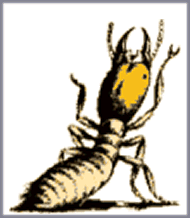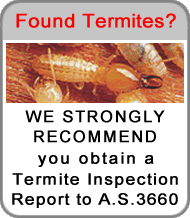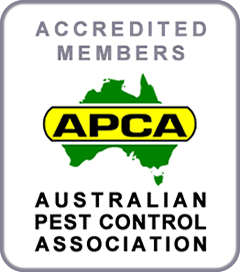 |
 |
 |
|
|
|||||||||||||||||||||||||
| About Termite Baiting in General - updated September 2022 |
| A successful termite baiting program depends on sufficient quantity of termite bait being consumed by the termites. Unfortunately there is NO guarantee another nest is not destroying timbers inside the house.
If "live" termites are found in the house or surrounds - a termite bait can be attached directly to the termite activity area - and it is easy to detect how much has been consumed. If you are in these circumstances and are considering DIY termite baiting, then at least get a Termite Inspection Report to AS:3660 by a professional pest control company. The cost varies but is usually $250 to $350 for an average size home. This will greatly assist the DIY Home-Owner to assess their chances of sucessfully eradicating the termites. It could be the best investment you ever make. HOWEVER if NO live termites have been found then DIY plastic stations with timber (food) therein are available for the DIY Home-Owner to place around their home, on or in the ground, to "monitor" for termite activity. Beware - termites travel from a hidden central colony nest by tunnelling through the soil. They are blind and may never find the little DIY plastic stations, in which case it will be a total waste of money. Your home is a much bigger object for the termites to find and infest timbers therein. The risk of on-going termite damage to the timbers in the house, may well be too large for the average DIY home-owner. In any case, we strongly recommend you first obtain a Termite Inspection Report to AS:3660 from a professional pest control company.
Remember: Your Home Insurance Policy does NOT cover repair costs of termite damaged timbers inside the building - which can be substantial, particularly if they destroy structural wall and roof timbers. In most cases at best the professional pest controller can offer baiting of live termites found, subsequently backed up by a TERMIDOR Treated Soil Barrier to AS:3660 which can be effective for up to 10 years - and which is covered by the professional indemnity insurance carried by the pest control company. |
|||||||||||
| Termites may never "find" a Plastic Monitoring Station |
| Subterranean Termites live in a central colony with a king and queen termite that produce hundreds of thousands of worker and soldier termites that travel through the soil to about 100 metres from the central colony nest in search of a timber food source. Termites have acute survival skills evolved over a 250 million year history. They travel in tunnels to avoid ANTS their mortal enemy. When they find a timber food source they signal other termites "dinner over here" and an increasing number termites will "aggregate" at the site until virtually all the trimber is consumed. The termites are blind and find new food sources largely at random.
There is no guarantee that the termites will find a termite bait station. If so the termites may continue attacking the timbers in the building sought to be protected. After all your home is a much bigger target than little plastic stations with timber therein. |
||
| "Disturbed" Termites may vacate a Plastic Monitoring Station |
| Even if the termite bait is applied directly onto live termite activity found - the DIY operative may easily disturb the termites in the bait station - causing the termites to vacate the location and consume little or no termite bait. The termites may continue to damage the timbers in the building.
Some species of destructive termites are very shy - in other words - even a little disturbance can send them running away from the bait station never to return. They may then congregate inside the timbers of your home where they will not be disturbed. |
||
| An INTEGRATED Approach for Long Term Protection |
| Termite Baiting offers no medium to long term protection from other termite nests in the area. Also it may be very difficult to be reasonably certain the live termites in a bait station have transferred sufficient bait back to the central colony to eliminate the entire colony of termites.
The termite nest may be small and eat a low quantity of bait versus it may be a large nest that will consume much more bait. How would you know what size the nest is ? After all the nest is most often completely hidden below ground - and there may be multiple nests. In order to obtain an immediate effective result we recommend a Treated Soil Barrier to AS:3660 using a non-repellent termiticide such as TERMIDOR or PREMISE liquid termiticide. To properly install a Treated Soil Barrier to AS: 3660 requires specialist knowledge and equipment generally beyond the ability and resources of a DIY orientated home-owner. Make sure the Treated Soil Barrier to AS:3660 is backed by professional indemnity insurance of the professional pest control company. Make sure you get a copy of their PPI Insurance Certificate before you sign up. |
|
|||||||||||||||||||||||||
             
|
| Published by the Fumapest Group © Copyright 1995 to - updated |